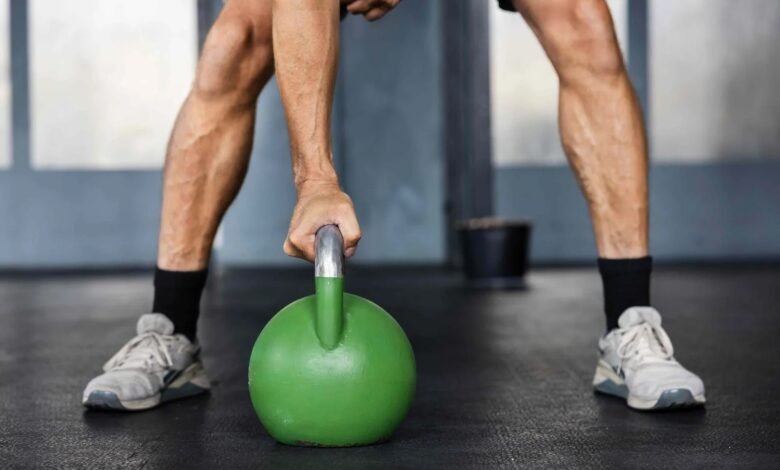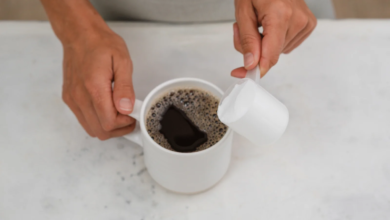8 Forearm Exercises For Better Grip Strength

8 Forearm Exercises For Better Grip Strength

A forearm workout is an important part of an overall strength-training routine and is key to improving grip strength. Your forearm—the relatively small section of arm between your wrist and elbow—contains 20 muscles that work together. They help move your wrist, flex and extend your fingers, and rotate your forearm.
These movements are critical to sports like tennis and rock-climbing, but they’re also part of everyday activities. Every time you grip a door handle, open a jar of salsa, or carry a bag of groceries, you use your forearms.
The farmer’s carry is a simple yet effective full-body exercise that demands grip strength. Holding heavy weights by the handle fires up the anterior (palm side) section of your forearms while you walk.
How to do it:
- Stand between two dumbbells or kettlebells of equal weight. Maintaining a flat back, squat down and grab a weight with each hand, then stand up.
- Roll your shoulders back, lift your chest, and engage your core muscles. Keeping your chin parallel to the floor and your arms straight down at your sides, slowly walk forward.
- Walk for about 30 seconds, then turn around and walk back to your starting position.
- Hinge at your hips, bend your knees, and lower the weights to the ground.
The kettlebell swing is a staple of high-intensity cardio workouts, but it’s also a research-backed exercise that strengthens the forearms. A 2022 study published in BMC Geriatrics found that after three months of kettlebell training, older adults demonstrated significant improvement in their grip strength.
How to do it:
- Stand behind a kettlebell with your feet a little wider than hip-width apart.
- Keeping your back flat and neck neutral, hinge forward at the hips, bend your knees slightly, and grip the kettlebell handle with both hands.
- From this bent-over position, hike the kettlebell back between your legs. Then, push your hips forward and return to a standing position, allowing momentum to swing the kettlebell forward.
- As the kettlebell falls down and between your legs, hinge your hips and push your butt back with slightly bent knees.
- Again, drive your hips forward as you stand, using your momentum to swing the kettlebell forward and up to chest height.
Sitting down and supporting your arms allows you to isolate the anterior muscles of the forearm, which power your grip and help stabilize your wrist.
How to do it:
- Grab a pair of lightweight dumbbells and sit on a bench or chair so that your thighs are parallel to the ground. You can also use a large resistance band. Secure one end under your feet and hold the opposite end in your hands.
- With your palms facing up, rest the backs of your forearms on your thighs. Allow your wrists, hands, and weights to hang over your knees.
- Without moving your arms, use your wrists to curl the weights up toward you. Pause for a second, then lower the weights to the starting position.
You can also flip your forearm so that your palms face down during the wrist curl. This targets the posterior (back) portion of the forearm. These muscles, known as the extensors, play a role in grip strength, joint stability, and arm rotation.
How to do it:
- Grab a pair of lightweight dumbbells and sit on a bench or chair so that your thighs are parallel to the ground. You can also use a large resistance band. Secure one end under your feet and hold the opposite end in your hands.
- With your palms facing down, rest the fronts of your forearms on your thighs. Allow your wrists, hands, and weights to hang over your knees.
- Without moving your arms, use your wrists to curl the weights up toward you. Pause for a second, then lower the weights to the starting position.
Research shows that most people have a stronger supinated (palms up) grip than a pronated (palms down) grip. Switching up your hand positioning during biceps curls targets the posterior portion of the forearm rather than the anterior muscles, potentially helping to balance out your grip strength.
How to do it:
- Grab a pair of dumbbells and stand with your feet about hip-width apart. Alternatively, you can hold a barbell or curl bar with both hands.
- Using an overhand grip (palms facing down), start with the weights down at your sides so that your palms are facing the back of the room. Then, keeping your upper arms “glued” to your ribs, bend your elbows to lift the weights up and toward your shoulders so that your palms are facing the front of the room.
- Pause for a second and slowly lower the weights to the starting position.
This twist on a classic pull-up targets the forearm muscles by putting more emphasis on grip strength.
How to do it:
- Loop a rolled-up towel over a pull-up bar and grip each side of the towel with either hand.
- With your arms fully extended, hang from the towel. You may need to bend your knees to lift your feet off the ground.
- For the pull-up portion, bend your elbows and use your arm, shoulder, and back muscles to lift your torso toward the bar.
- Pause. Then, slowly straighten your arms to lower your body to the starting position.
If you’re not yet able to do a towel grip pull-up, start with hanging with straight arms for as long as you can.
Carrying a heavy load with just your thumb and fingers activates both the anterior and posterior muscles of the forearm to build overall forearm strength.
How to do it:
- Stand between a pair of weight plates of equal weight. If you don’t have weight plates, you can use heavy books.
- Maintaining a flat back, squat down and pinch the edge of each weight between your thumb and fingers. Keep your fingers somewhat straight rather than curled. Stand up.
- Roll your shoulders back, lift your chest, and engage your core muscles. Keeping your chin parallel to the floor and your arms straight down at your sides, slowly walk forward.
- Walk for about 30 seconds, then turn around and walk back to your starting position.
- Hinge at your hips, bend your knees, and lower the weights to the ground.
Deadlifting has compounding benefits. Gripping a loaded barbell increases your forearm strength. In turn, that also enables you to lift heavier loads and build greater lower-body strength and power.
How to do it:
- Stand behind a loaded barbell with your feet a little wider than hip-width apart and your toes pointed forward.
- Keeping your back flat and neck neutral, hinge at your hips, push your butt back, and bend your knees to reach down and grip the barbell with both hands, palms facing down.
- Engage your core and roll your shoulders back. Push through your heels and drive your hips forward to stand up.
- Pause. Then, hinge forward at the hips, push your butt back, and bend your knees to lower the barbell to the ground.
If you don’t have access to a barbell, you can do this exercise with two of your heaviest dumbbells or kettlebells.
Perform this workout as two separate circuits, resting for 30-60 seconds between each set and two minutes between each circuit.
Circuit 1:
- Kettlebell swing: 15 reps
- Barbell deadlift: 6-10 reps
- Reverse grip biceps curl: 10-12 reps
- Towel grip pull-up: 1-4 reps
Repeat for a total of three rounds.
Circuit 2:
- Farmer’s carry: 60 seconds
- Wrist curl: 12-18 reps
- Reverse wrist curl: 12-18 reps
- Plate pinch carry: 60 seconds
Repeat for a total of three rounds.
A few practical tips can help you make the most of your forearm workout:
- Warm up first: Taking five minutes to gradually elevate your heart rate, increase blood flow and synovial (joint) fluid, and warm up your muscles and connective tissues can help prevent injuries and lead to a more effective workout. Try warming up your forearms specifically with wrist circles and plank walk-outs.
- Focus on form over weight: When performing a new movement for the first time, use a lighter weight than you think you need to avoid injury. Focus on mastering the proper form, then gradually add weight.
- Pay attention to your hands: Grip-focused movements, like pull-ups and deadlifts, can take a toll on your palms and fingers. Over time, your skin will become tougher and may develop calluses, but doing too much too soon can lead to painful skin tears. Adjust your weight and volume accordingly, and take breaks as needed.
- Avoid overtraining: Lifting too heavy or too much, overdoing high-intensity workouts, and skipping rest days can lead to a feeling of “burnout” or even overtraining syndrome, an accumulation of stress on the body. Try dialing back your workouts if you’re not making progress, dealing with injuries or frequent illness, or always feel fatigued.
- Don’t exhaust your forearms at the beginning of a workout: You need a strong grip to perform common strength exercises, like deadlifts, pull-ups, and rows. To avoid tiring out your forearm muscles early in your workout, save exercises that isolate the forearms, like wrist curls and plate pinch carries, for the end of your workout.
Disclaimer: This news article has been republished exactly as it appeared on its original source, without any modification.
We do not take any responsibility for its content, which remains solely the responsibility of the original publisher.
Author: Jenessa Connor, NASM-CPT
Published on: 2025-11-01 10:04:00
Source: www.health.com
Disclaimer: This news article has been republished exactly as it appeared on its original source, without any modification.
We do not take any responsibility for its content, which remains solely the responsibility of the original publisher.
Author: uaetodaynews
Published on: 2025-11-01 11:29:00
Source: uaetodaynews.com





